Spiders are a specific class of animals called arachnids that range in size from the small jumping spiders commonly seen in residential areas to the Goliath Bird eater tarantula of South America (the largest spider in the world). They differ from insects because they have two body parts and eight legs.
Formal categorizations of spiders often start by placing them in families, based on specific criteria.
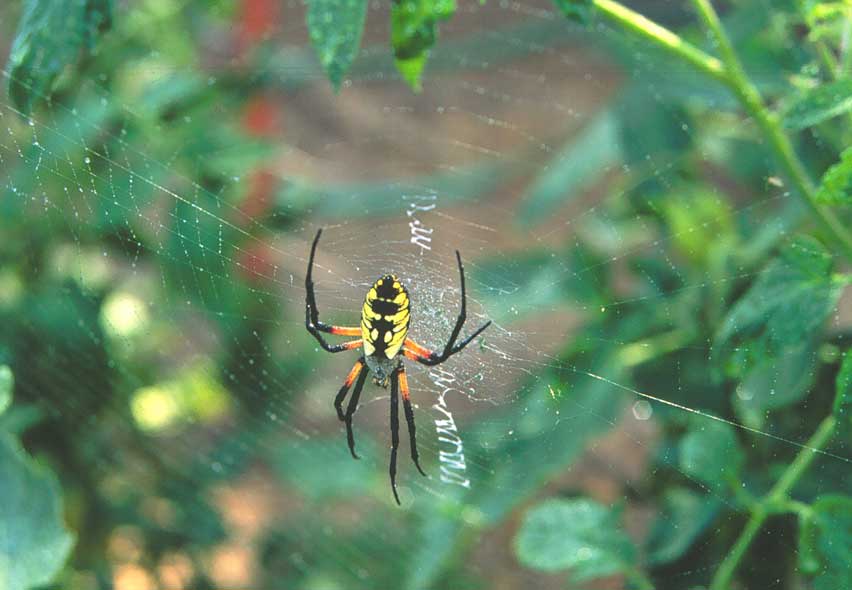
A less formal way to think about different types of spiders starts by considering their eating habits. Spiders are carnivores that catch their food in one of two ways. They either use a web or actively hunt on the land or water.
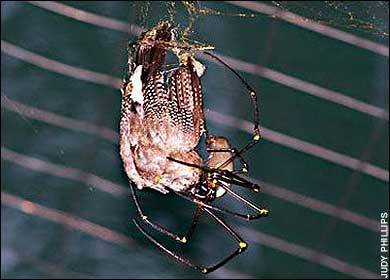
A photo of a giant spider eating a finch
A photograph of a giant spider eating a bird in an Australian garden
Size of spiders
Spiders occur in a large range of sizes. The smallest Patu digua are less than 0.37 mm in body length. The largest and heaviest spiders occur among tarantulas, which can have body lengths up to 90 mm (about 3.5 inches) and leg spans up to 250 mm (about 10 inches ).
Spider Feetmany spiders have special adaptations that allow them to walk easily along relatively smooth or vertical surfaces.

Spiders have thick brushes of hair, each ending in tiny microscopic feet that let it walk up vertical surfaces.
The end of each leg is covered with thick brushes of hair, and the end of each hair is covered in tiny microscopic "feet." All the tiny feet grip the small bumps on whatever the spider is walking on, allowing the spider to move easily over most terrain.
Spider Visionwhile most spiders have multiple pairs of eyes, vision is a secondary sense in the vast majority of species. Most spiders primarily interact with the world through tactile sensation.
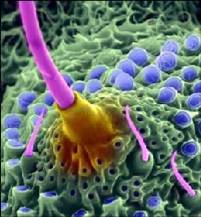
Electron microscope image of one of a spider's sensitive hairs
They are covered in highly sensitive hairs that pick up even low-level vibrations in whatever the spider is standing on (the ground, floor, leaf or web, for example). Many spiders have additional hairs which pick up vibrations in the air (sound). Most spiders also have a sense of taste and smell, which play a role in feeding and reproduction.
Spider Brain
one of the most amazing things about spiders is how much they can accomplish with such a small brain. The spider's central nervous system is made up of two relatively simple ganglia, or nerve cell clusters, connected to nerves leading to the spider's various muscles and sensory systems.
one of the most amazing things about spiders is how much they can accomplish with such a small brain. The spider's central nervous system is made up of two relatively simple ganglia, or nerve cell clusters, connected to nerves leading to the spider's various muscles and sensory systems.
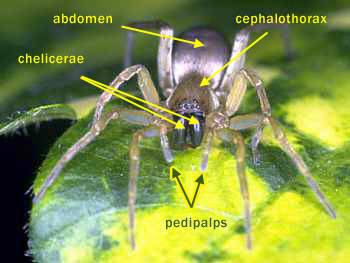
Who programmed the brain of this little animal with such sophisticated programs?
The simple instructions encoded in these nerve cells give spiders all the information they need to undertake complex tasks, such as building webs and attacking prey. Some species even exhibit learning behavior. If something isn't working -- a web in a particular spot, for example -- the spider will give up the activity and try something new.
Hence, scientists say that spiders have programs in brain to enable them to design their webs and these program couldn't be developed or created by itself as claiming that nature or coincidence are the creator of these programs is equal to a man says that nature or coincidence had developed windows 7 or Xp.
Indeed it isn't a rational way of thinking!!!!!
Allah almighty is the creator who taught and programmed all of His creatures who says in Qur'an: (That is God, your Lord! there is no god but He, the Creator of all things: then worship ye Him: and He hath power to dispose of all affairs.* No vision can grasp Him, but His grasp is over all vision: He is above all comprehension yet is acquainted with all things.) (Sûrat Al-Anaam- verse102-103).
--------------------
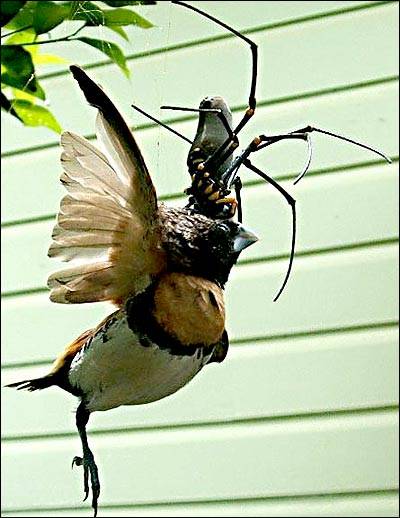
ليست هناك تعليقات:
إرسال تعليق